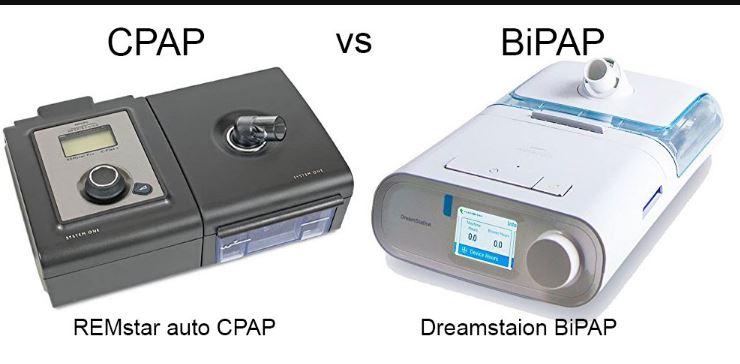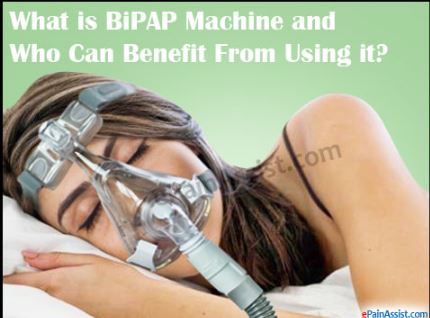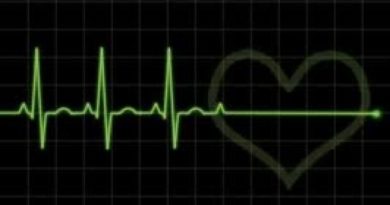Bipap Machine
What Is Bipap Machine?
Bilevel Positive Airway Pressure or Bipap machine is recommended to individuals who are experiencing sleep apnea. This machine helps them to breathe easily and more regularly as they sleep throughout the night [1, 2, 3].
A Bilevel Positive Airway Pressure machine is a non-invasive therapy used in the management of sleep apnea [3]. This machine delivers pressurized air to the patient’s airway through a mask. The pressurized air serves as a splint to prevent the collapse of the throat and obstructing the airway while sleeping [1]. Figure 1 shows an example of a BIPAP machine.

Figure 1- A BIPAP machine
Physiology of Untreated Apneic Airway
When an individual is awake, the airways are kept open because of the continuous need to breathe. But when a person falls asleep, the muscles and the tissue in the body relax. Relaxed muscles and tissue in the throat can fall back and block the airway.
This prevents air from passing through and cause sleep apnea. The BIPAP machine provides a positive airway pressure that creates a pneumatic splint. This will keep the airway unobstructed and allow continuous breathing and oxygenation of the organs even while the person is asleep [3].
Non-invasive therapy for Sleep Apnea
A non-invasive management for sleep apnea does not require a medical procedure to insert a tube in the patient’s airway such as in an intubation or tracheotomy. Positive pressure is delivered to the patient through a mask and headgear.
Examples for non-invasive therapy include Continuous Positive Airway Pressure (CPAP) and the BIPAP machine. These therapies were initially intended for the management of apnea but this is also beneficial to patients who suffers from respiratory dysfunction to sleep better [4].
Bipap vs CPAP
Although both the BIPAP and CPAP machines provide positive pressure to prevent the obstruction of the airway, they differ in the method that they deliver the pressure [1, 2, 3, 4].
CPAP machine
A CPAP machine delivers the pressurized air at a single pressure that is consistent throughout the night. There are several CPAP machines which have a ramp feature that starts off with a lower pressure and slowly builds up until it reaches the desired air pressure. This feature makes the initial air pressure more tolerable for the person using the machine [1].
BIPAP machine
Unlike the CPAP machine, the BIPAP machine has 2 pressure settings. It has a prescribed setting for inhalation and a different pressure for exhalation. The 2 different air pressure settings allow for more air to get in and out of the lungs. The BIPAP machine is developed because some patients find the constant pressure of the CPAP machine hard to exhale against. For patients who are prescribed higher air pressure strength, it can be difficult to exhale against the incoming air [1].

Indications
Although it is primarily used for sleep apnea, patients diagnosed with other respiratory dysfunction have benefited from the use of a BIPAP machine. Some of the indications for the use a BIPAP machine include [5]:
- Chronic Obstructive Pulmonary Disease (COPD) to decrease airway resistance
- Respiratory failure associated with the fatigue of the accessory muscles
- Pulmonary edema to help reduce the cardiac output that decreases venous return to the right ventricle and decrease the amount of blood returning to the heart
- Pulmonary embolism to improve the oxygenation of the patient
- Atelectasis in order to ensure the patency of the airways
- Pneumonia to help maintain an adequate oxygenation of the patient
Benefits
There are several benefits associated with the use of a BIPAP machine [6]:
- Patients who are using a BIPAP machine have good compliance rates.
- Those who use this machine have shown improvement in terms of their blood gas levels and clinical status.
- There are several studies that show central sleep apnea associated with a cerebrovascular accident or cardiac failure are managed with the use of a BIPAP machine.
- A new technology on BIPAP machine monitors the airflow of the patient during expiration and adjusts the pressure it provides depends on the need of the patient. This feature improves the comfort level of the patient when using the BIPAP machine. This feature is important especially to those who have COPD who may find it difficult to exhale against the positive pressure.

Side Effects
As with other medical treatment, the use of a BIPAP machine have associated side effects [6]:
- The cost of renting or purchasing a BIPAP machine is higher compared to that of a CPAP machine. Renting may cost about $350 per month and purchasing one may cost $3000.
- The titration of the air pressure in inhalation and exhalation is associated with the development of central apnea. The exact cause is not certain but is possibly due to higher lung volume on inspiration compared to expiration.
- General discomfort especially at the beginning of the treatment
- Mask air leaks
- Nasal congestion
- Rhinitis
- Dry nose
The use of a BIPAP machine may be beneficial for the patient but it also has associated side effects. A doctor must be consulted before initiating the use of this machine to prevent any complications.
References
- Sleep Apnea Guide. (2016). BIPAP Machines.Sleep Apnea Guide: http://www.sleep-apnea-guide.com/bipap-machines.ht
- Philips, K. (2014, December 12). What is BiPAP Therapy? The Difference Between BiPAP and CPAP. ReAlaska Sleep Education Center: http://www.alaskasleep.com/blog/what-is-bipap-therapy-machine-bilevel-positive-airway-pressure
- American Sleep Association. (2017). CPAP vs BiPAP. American Sleep Association: https://www.sleepassociation.org/cpap-vs-bipap/
- Shumard, T. (2015, December 3). What is a BiPAP Machine? CPAP vs BiPAP.SomnoSure Education Center: https://www.somnosure.com/blog/what-is-a-bipap-machine-cpap-vs-bipap
- Sellman, T. K. (2015, December 2). CPAP vs BiPAP for COPD: Which is Best?Somnosure Education Center: https://www.somnosure.com/blog/cpap-vs-bipap-for-copd-which-is-best
- Frea, R. (2009, December 23). Indications for BiPAP.Respiratory Therapy Cave: http://respiratorytherapycave.blogspot.co.nz/2009/12/indicatio

